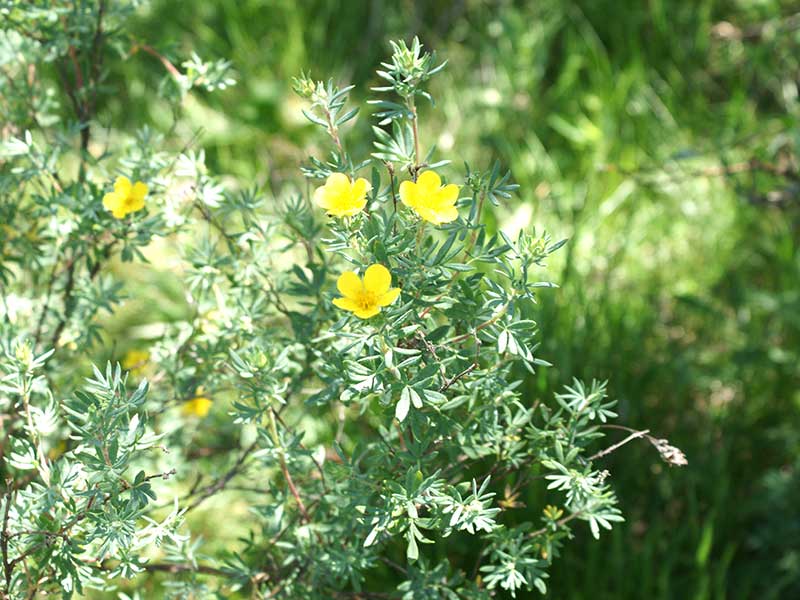Potentilla fruticosa / shrubby cinquefoil
- low, deciduous, shrub; wetlands and riparian zones
- yellow buttercup-like flowers with 5 leaflets, often in clusters
- blooms from June until frost
- pinnately compound leaves, typically with 5 leaflets
- fruit (achene) remains into winter
Synonym: Dasiphora fruticosa (disputed), Potentilla floribunda, Pentaphylloides floribunda
Also known as: yellow rose, fivefingers, golden hardhack, widdy
Shrubby cinquefoil is a compact, deciduous shrub, covered, for much of the summer, with lots of yellow flowers. The flowers are saucer shaped, with 5 round-ish petals and a ring of a couple dozen brown stamens. They are an inch or so in diameter and look like buttercups on a bush… which they are. They may appear singly at the end of stems, or in clumps but they are not part of any more complex inflorescence.
Although for much of the year you wouldn’t need to look at the leaves to know what plant this is, the leaves are also interesting. They are pinnately compound, typically with 5 narrow elliptical leaflets, hence the name cinquefoil (5 leaves), but the number of leaflets can actually vary from 3 to 7. The leaves appear somewhat blue-ish because of the hairs that usually cover both surfaces. The leaf arrangement is alternate.
Shrubby cinquefoil is usually found in moisture-retentive soils as in fens, but also in wetter rocky areas. It is very widespread in the Valley, especially along streams – and associated roads – leading to the river. In keeping with that, it is associated with willows (Salix spp.), sedges (Carex spp.) and rushes (Juncus spp.) and wetland grasses. It propagates by seed or by sprouting from the root crown. Prostrate stems may also root in contact with the moist soil.
| Color | |
|---|---|
| Family | |
| Blossom size | |
| Inflorescence size | |
| Inflorescence type | |
| When? | |
| Where? |


